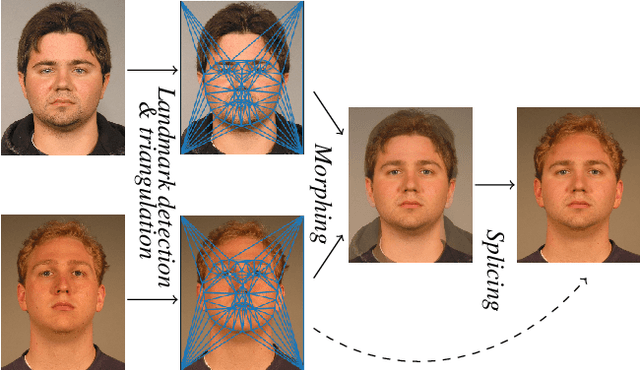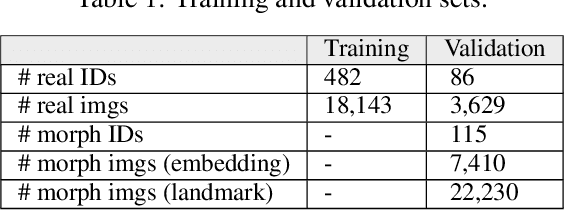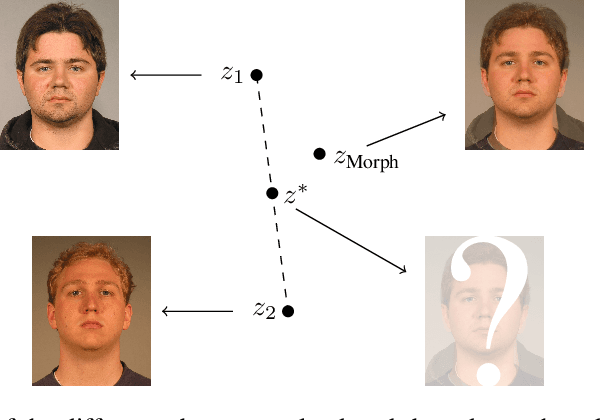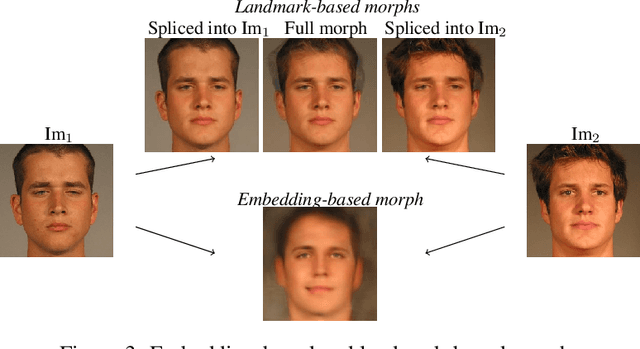A Face Recognition System's Worst Morph Nightmare, Theoretically
Paper and Code
Nov 30, 2021



It has been shown that Face Recognition Systems (FRSs) are vulnerable to morphing attacks, but most research focusses on landmark-based morphs. A second method for generating morphs uses Generative Adversarial Networks, which results in convincingly real facial images that can be almost as challenging for FRSs as landmark-based attacks. We propose a method to create a third, different type of morph, that has the advantage of being easier to train. We introduce the theoretical concept of \textit{worst-case morphs}, which are those morphs that are most challenging for a fixed FRS. For a set of images and corresponding embeddings in an FRS's latent space, we generate images that approximate these worst-case morphs using a mapping from embedding space back to image space. While the resulting images are not yet as challenging as other morphs, they can provide valuable information in future research on Morphing Attack Detection (MAD) methods and on weaknesses of FRSs. Methods for MAD need to be validated on more varied morph databases. Our proposed method contributes to achieving such variation.
 Add to Chrome
Add to Chrome Add to Firefox
Add to Firefox Add to Edge
Add to Edge